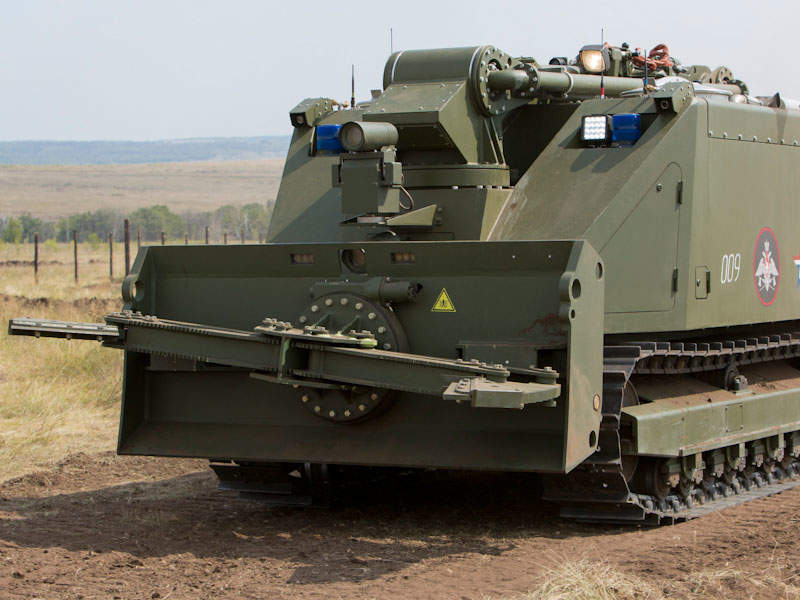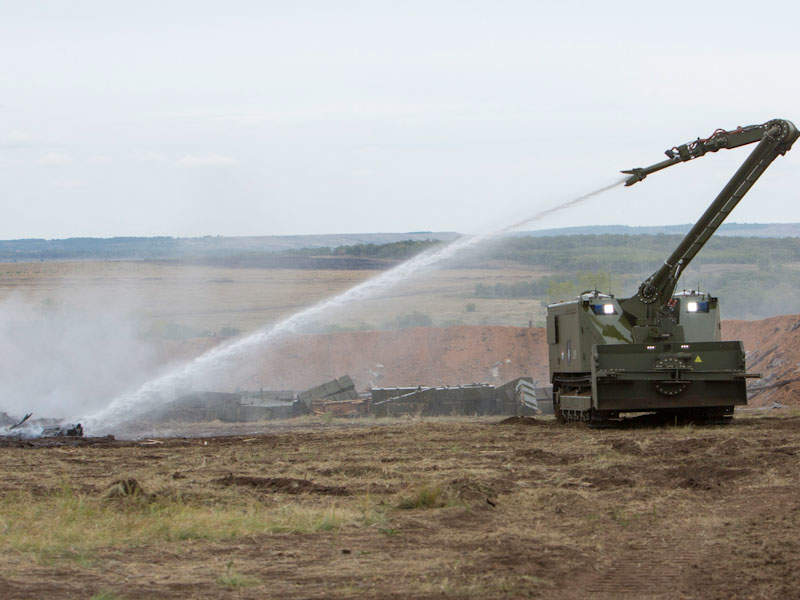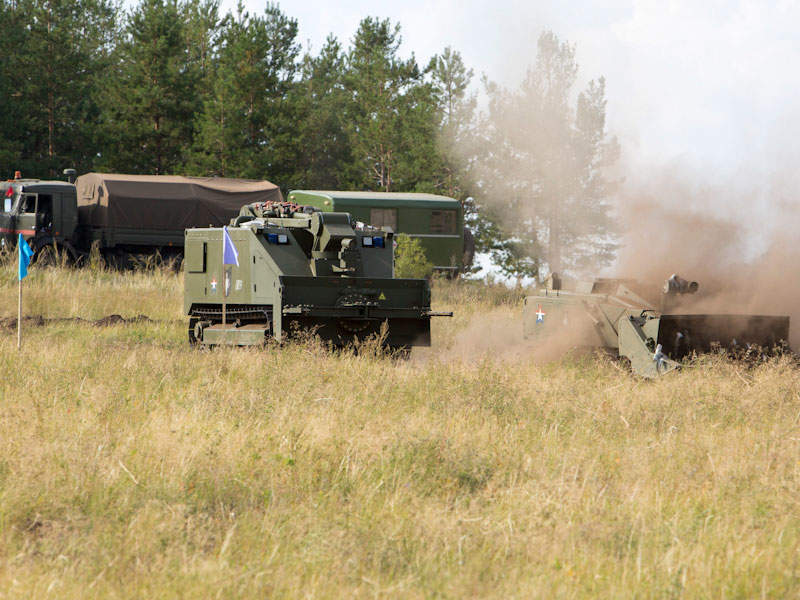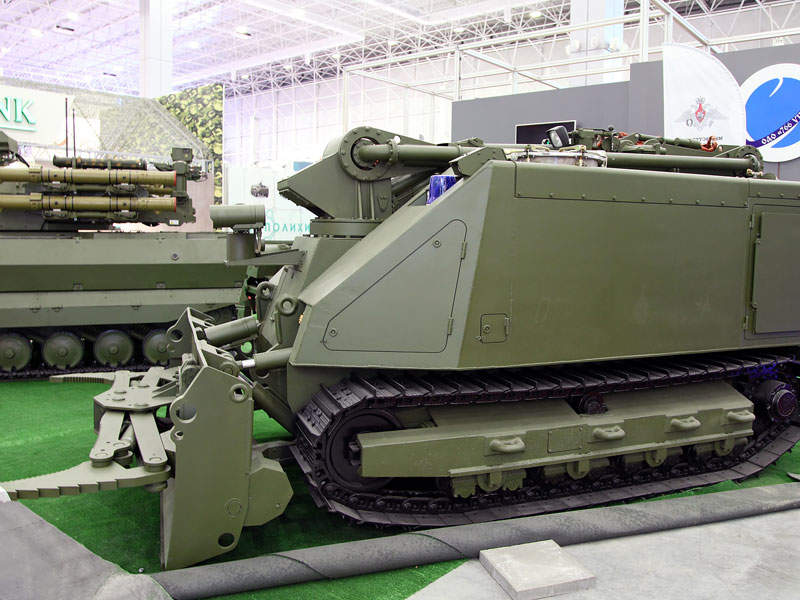Uran-14 multi-purpose unmanned ground vehicle (UGV), developed by JSC 766 UPTK, is currently operational with the Armed Forces of the Russian Federation.
The robot is designed primarily to extinguish fires in explosive atmospheres and / or difficult to reach areas such as burning military warehouses, ammunition dumps, and petrochemical plants. It is also suitable for missions such as breaching and clearing minefields, surveillance and engineering reconnaissance.
The Uran-14 was used to extinguish damaged military equipment during the Kavkaz-2020 strategic command and staff exercise at the Kapustin Yar training ground in Russia.
Uran-14 UGV orders and deliveries
The Uran-14 unmanned ground vehicle was demonstrated to the Military Training and Research Center of the Land Forces, Russia, in September 2014. The Russian Armed Forces conducted a fire extinguishing exercise on the UGV in the minefields in Russia in November 2014.
The robot was unveiled during the Army-2015 international military and technical forum held near Moscow, Russia, in June 2015 and completed state trials in the same year.
The Eastern Military District of the Armed Forces of the Russian Federation took delivery of the first prototype of the Uran-14 unmanned ground vehicle in October 2015.
The UGV was demonstrated to foreign militaries during the Army 2016 exhibition held in September.
In September 2020, it was reported that each engineering regiment and brigade of Russia will operate the Uran-14 UGVs.
Uran-14 UGV design and features
Based on tracked chassis, the Uran-14 unmanned ground vehicle can manoeuvre through complex off-road conditions. It is equipped with steel armour for protection against mine explosions and flammable substances.
The UGV has a length of 3.8m, width of 2.1m, height of 2.019m, and weight of 14t. It has a bulldozer at the front with a 1.8m-wide blade to clear obstacles weighing approximately 10t.
It can be provided with a tong-like rotational gripper to lift hazardous and explosive cargo weighing up to 2,000kg. The gripper can also collapse buildings and cut wires.
The Uran-14 is installed with a water tanker, capable of storing 2,000l, and a foaming agent tank with a capacity of 600l. A water source can be mounted externally for additional water supplies. A water pump is installed to sprinkle water on the fire in all directions.
A hydraulic winch at the rear is used for pulling objects weighing 7,100kg. The robot also features 25m-long steel rope and claw equipment, which is used to overcome obstacles.
Sensors on board Uran-14 UGV
The Uran-14 multi-purpose tracked UGV is fitted with an electro-optical/infrared (EO/IR) imaging system which can detect and track hazardous objects under all lighting conditions.
Sensors featuring a video surveillance system provide the robot operators with 360° remote surveillance and reconnaissance in real-time.
Uran-14 operations and control
The Uran-14 unmanned ground vehicle is remotely controlled by a team of two crew members using a remote control system from a distance of up to 2km. A communication link enables data transfer between the robot and the remote control station.
The UGV returns to its home in the event of a loss of communication with the control station.
Propulsion and performance of the UGV
A 240hp turbocharged diesel engine enables the Uran-14 robot to move at a maximum speed of 12km/h. The UGV has a working pressure of 1,000kPa and can extinguish fires up to a range of 50m.
The military robot is capable of negotiating steep slopes ranging from 15° to 30°, can cross ditches of 1.2m width and climb walls as high as 0.4m.
The Uran-14’s anti-explosion and waterproof design enables it to operate in high temperatures.







